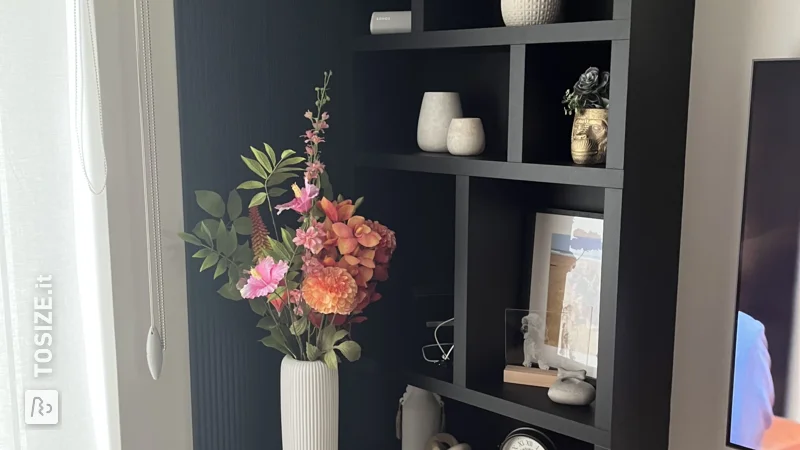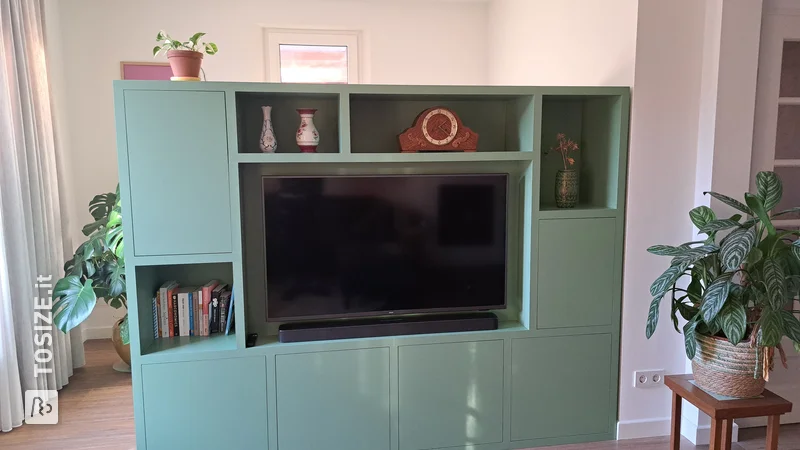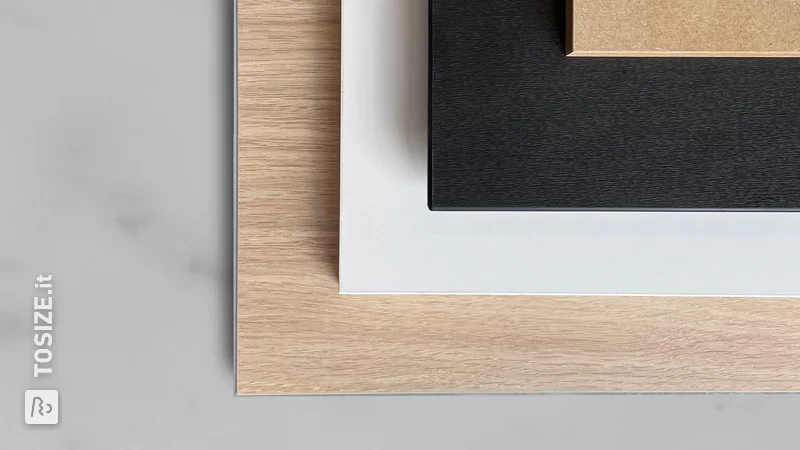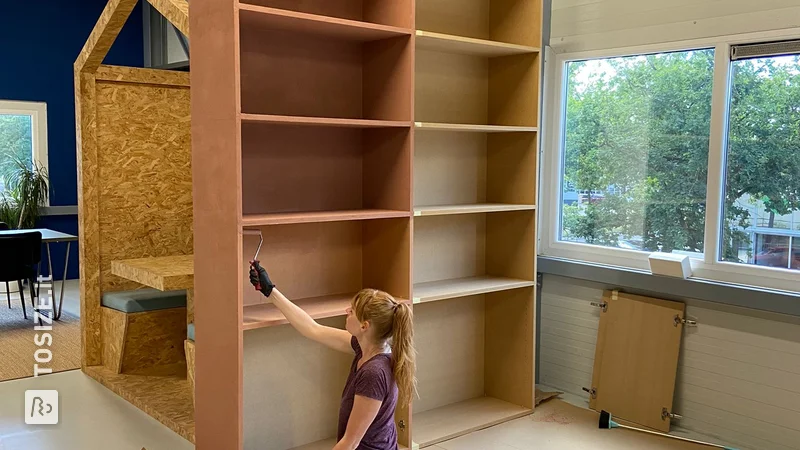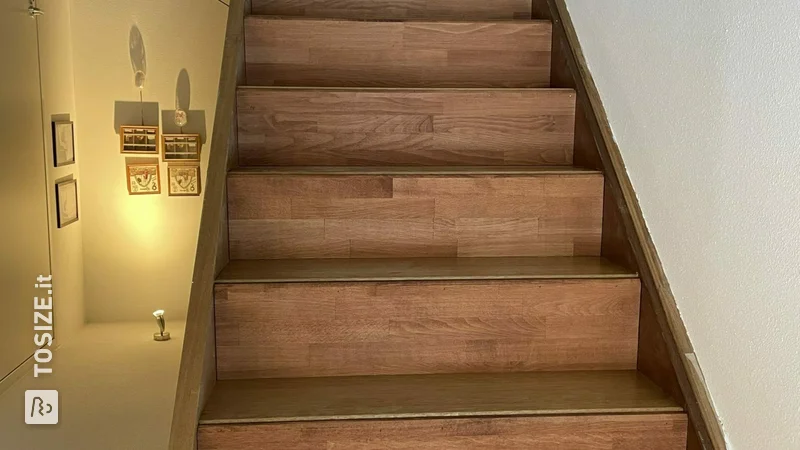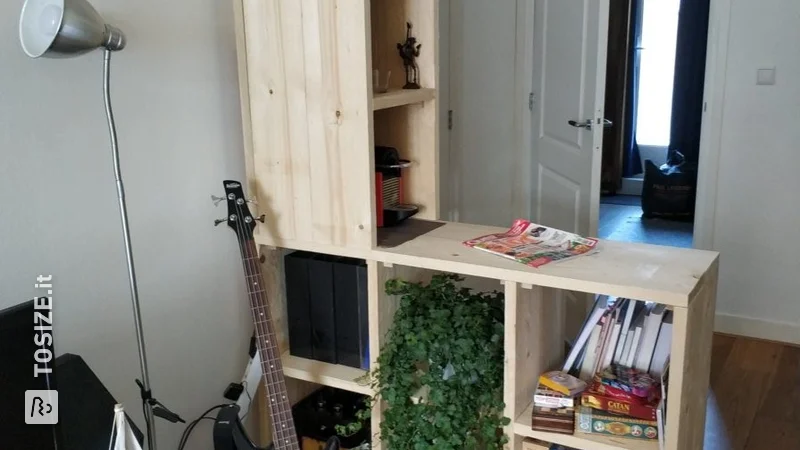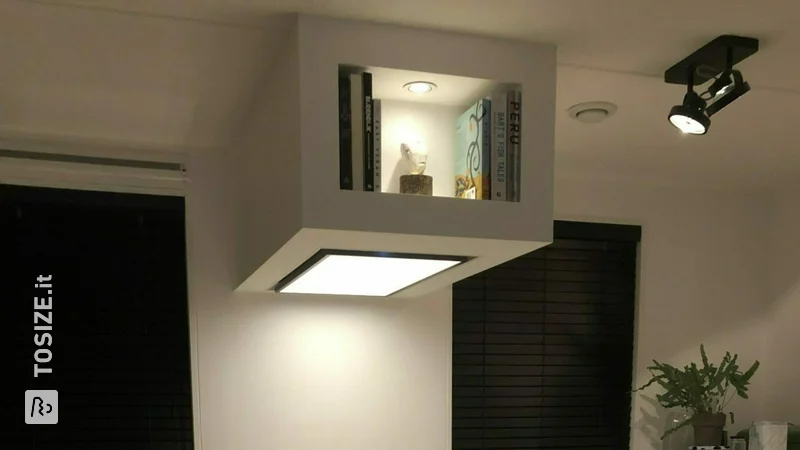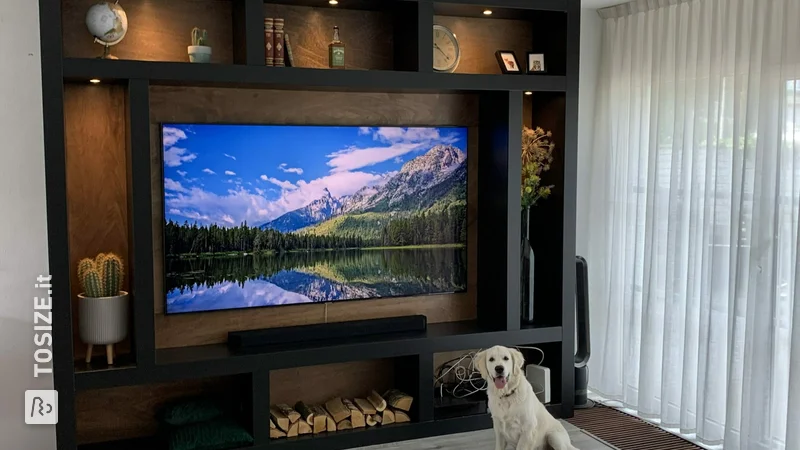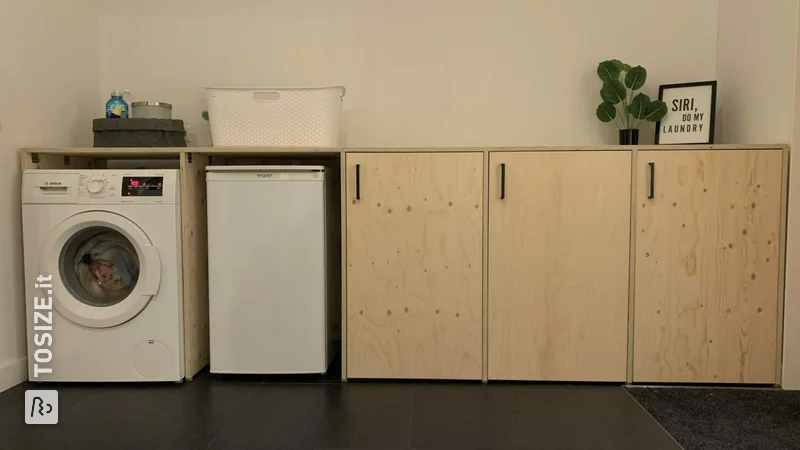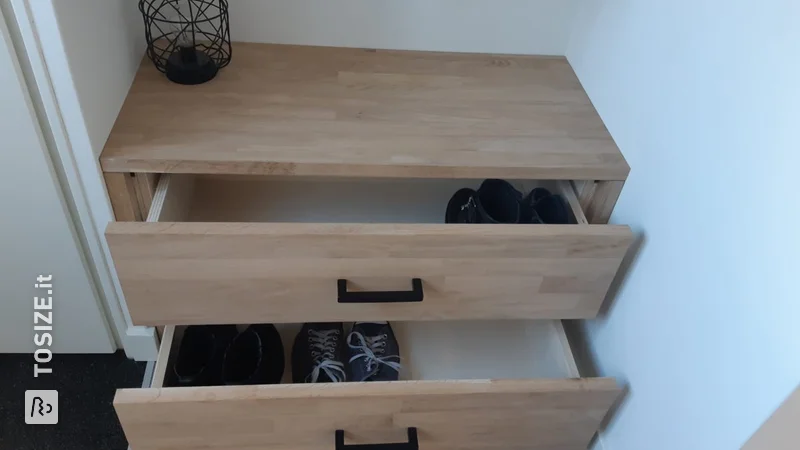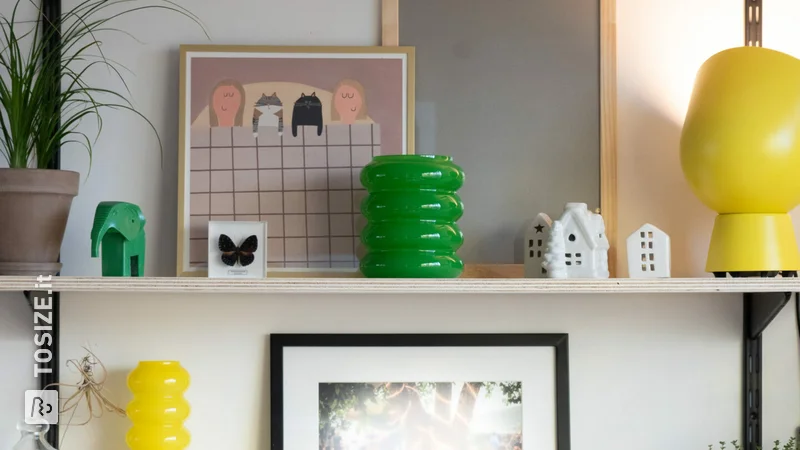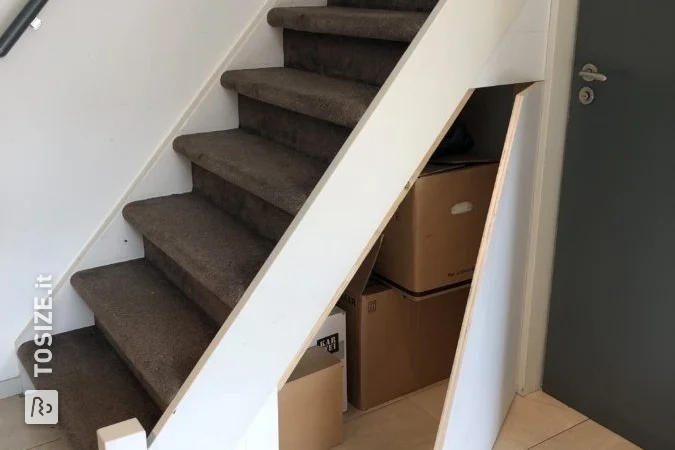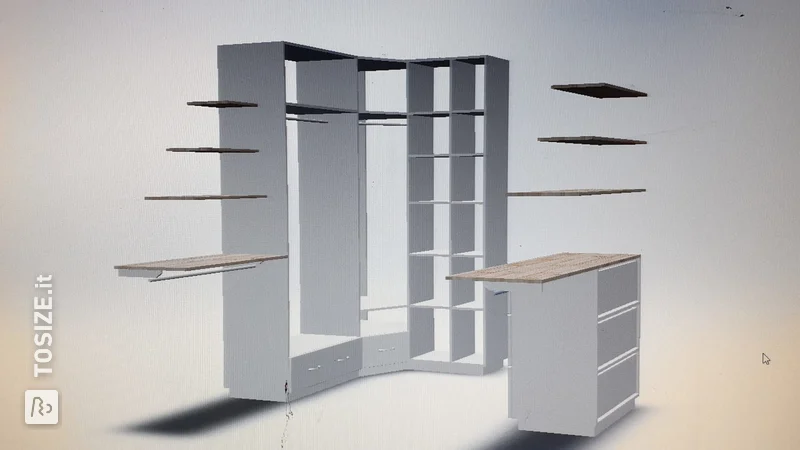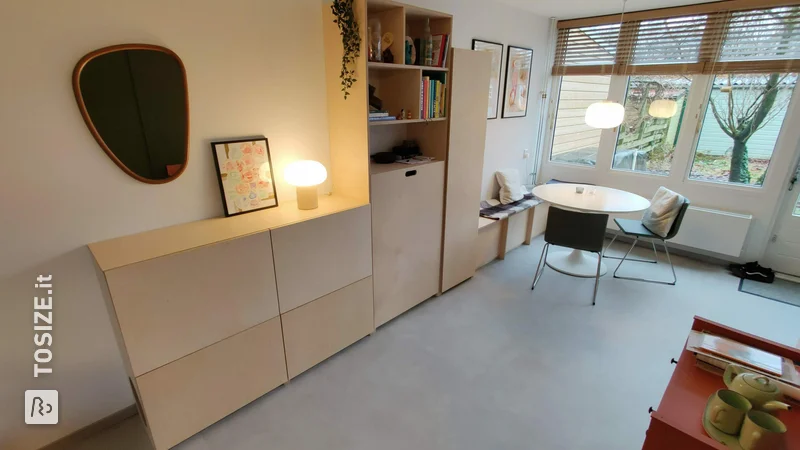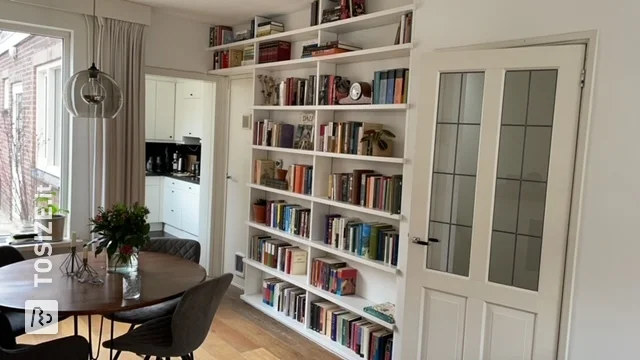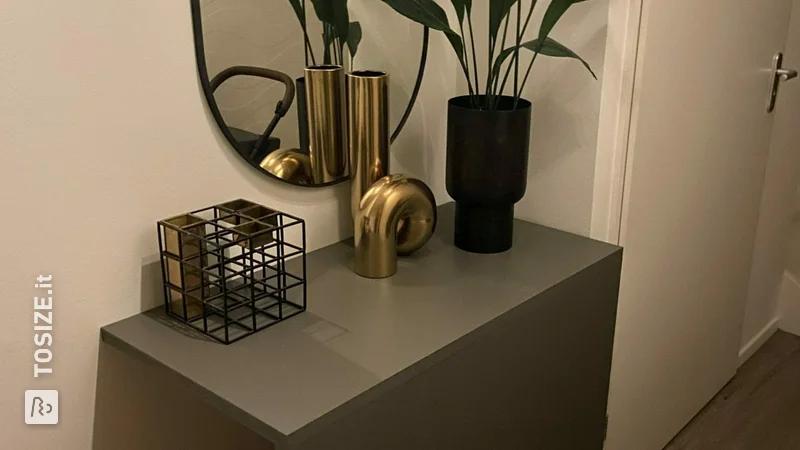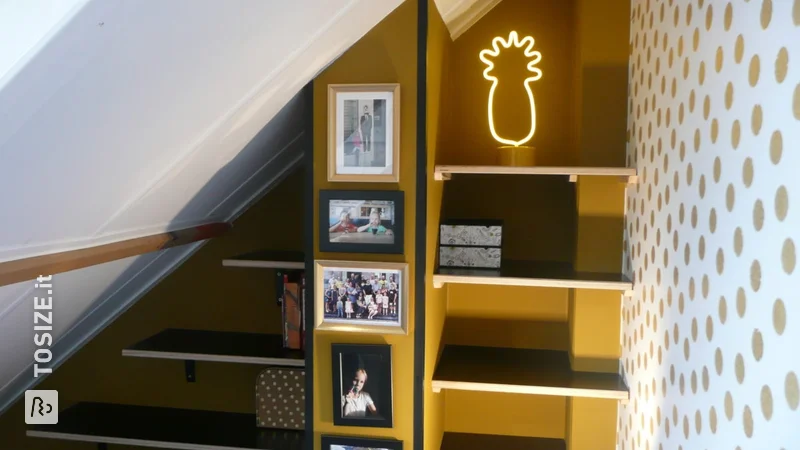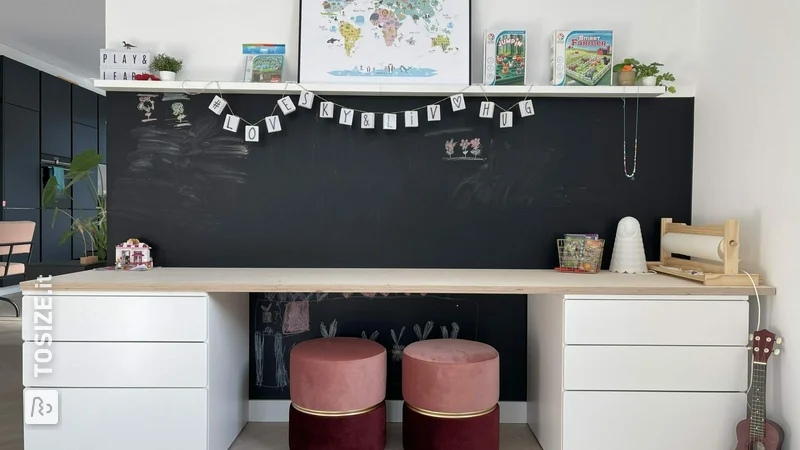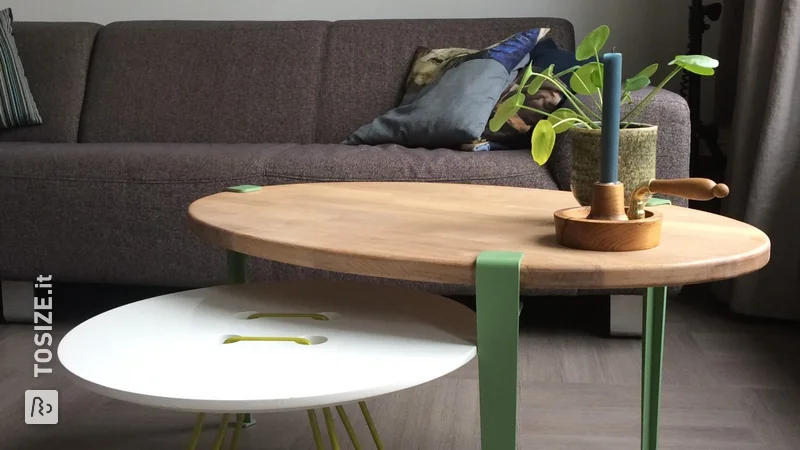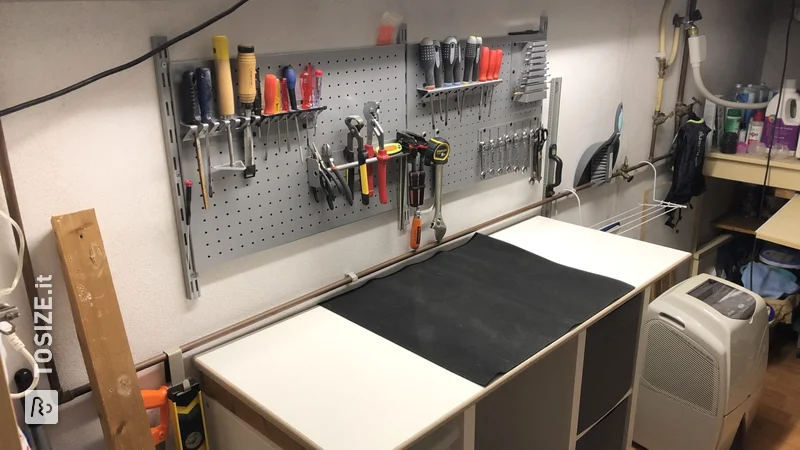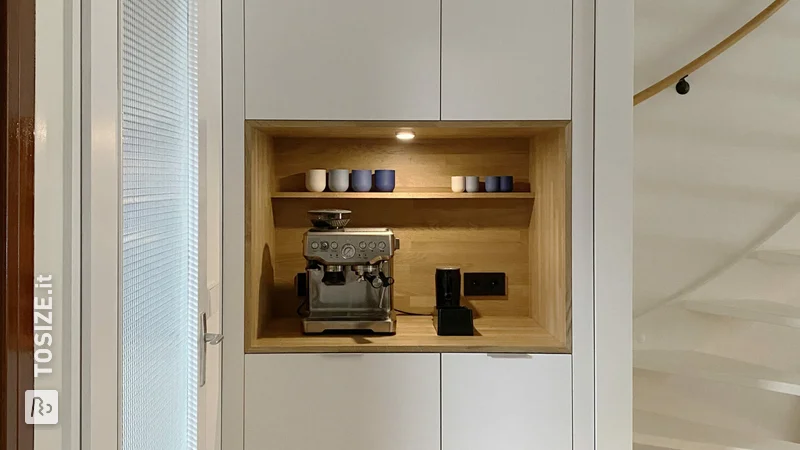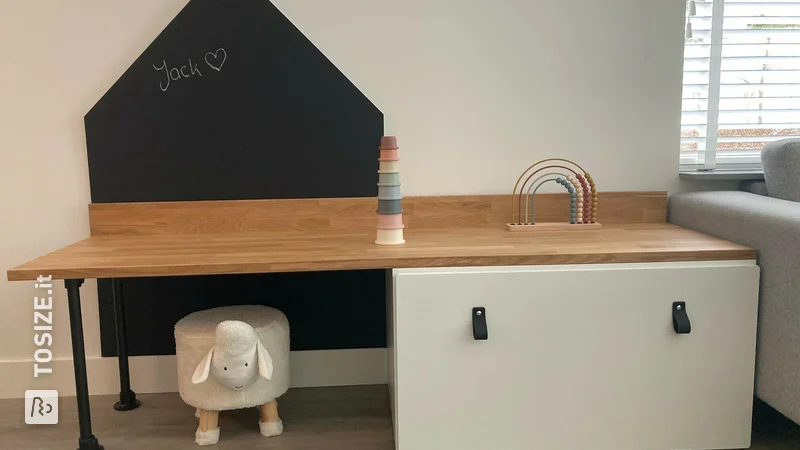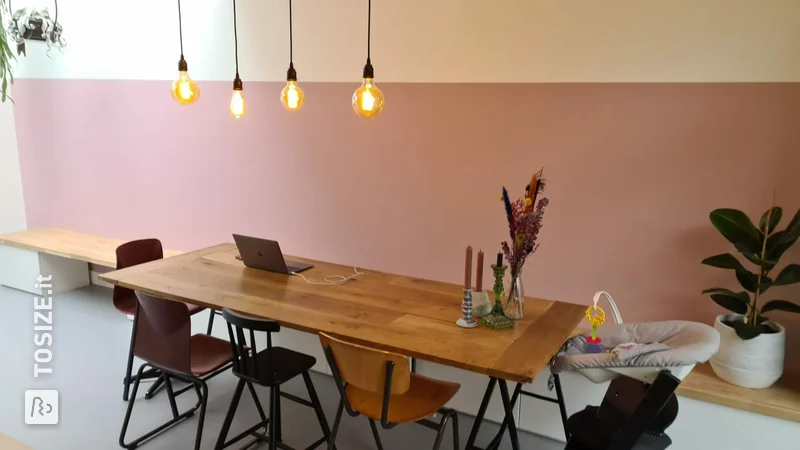Straight rounding of wood and sheet material
Do you already have an idea of what you are going to realise and do you doubt whether a rounding is useful? Read this article and find out all you need to know about the possibilities of giving your sheet material a smooth finish.
What is 'rounding off'?
The edge finishing 'rounding' ensures a tight, unsharp edge. The edge of the sheet material is processed with a router. When we talk about rounding the edge, we mean that the sharpness of the edges is removed. Do you want to round off the corners of the shape? You can do that too! Then read more about our available forms.
For example, when you use the sheet material as a desktop or want to take the edge off the TV cabinet. In this article you will find several examples of other creative handymen and an explanation of the possibilities. When to choose rounding, and when not to.
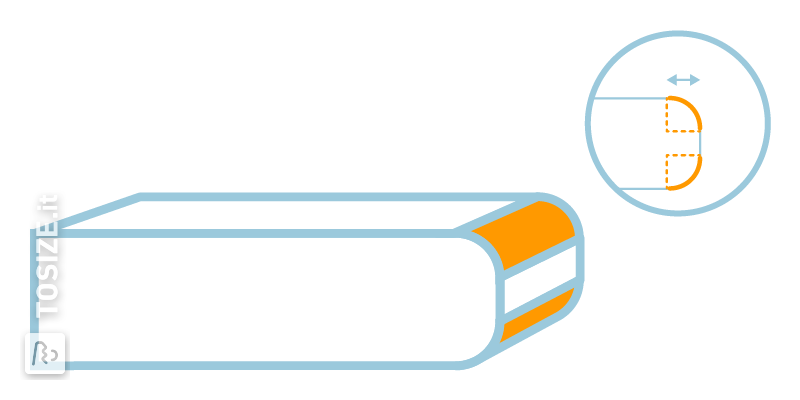
When do you choose to round off your edges?
Rounding off offers a nice solution for various projects, but for some it is less relevant and you only apply it when your project actually demands it. For example, it is ideal to apply it to the sheet materials listed below:
But not so on board materials with a hpl-, veneer-, phenolic resin- or melamine top layer, for example concreteplex and plywood. If you choose to round off on one of these sheet materials, please take into account that the top layer will be damaged by the router.
Protect your sheet material well!
The round-off router cuts a corner off the edge of the sheet material. This leaves the edge 'open'. Work your panel material carefully by sanding it with a fine grain after sanding and finish with a varnish or clear varnish. This way you can enjoy your board material the longest!en met een vernis of blanke lak af te werken. Op die manier heb je het langst plezier van je plaatmateriaal!
Rounding off the finish
If you want to round off the sheet material, you have several possibilities with regard to radius. 2 mm is the smallest possible rounding. See below the differences between the possibilities.
Which radius is suitable for my project?
When entering the rounding, take the quantity into account. If you have a sheet 6 mm thick and you choose a 2 mm rounding, the rounding will come to about 1/3 of your sheet. If you have a sheet 18 mm thick, then a 2 mm rounding is a small detail. Keep this tip in mind when ordering your made-to-measure sheet material!
Round off the edges by 2 mm
A 2 mm edge trim takes the edge off. Useful, for example, to apply to:
- (Kitchen) doors - usually 18 mm thick
- Shelves - usually 18 mm thick
Order your plate material via the button below, directly to size with a tight finish. Or check out the other possibilities and examples below.
In this example, a radius of 2 mm was applied to an MDF blank of 18 mm thickness.
Order your sheet material to size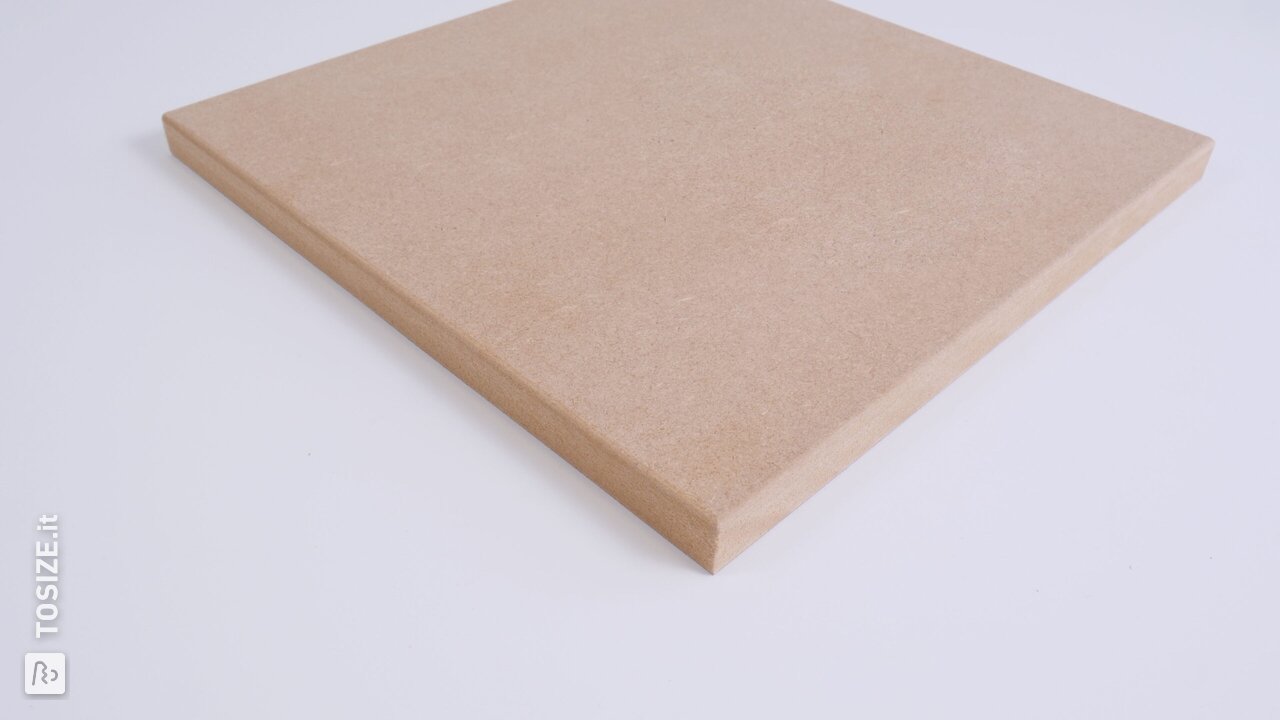
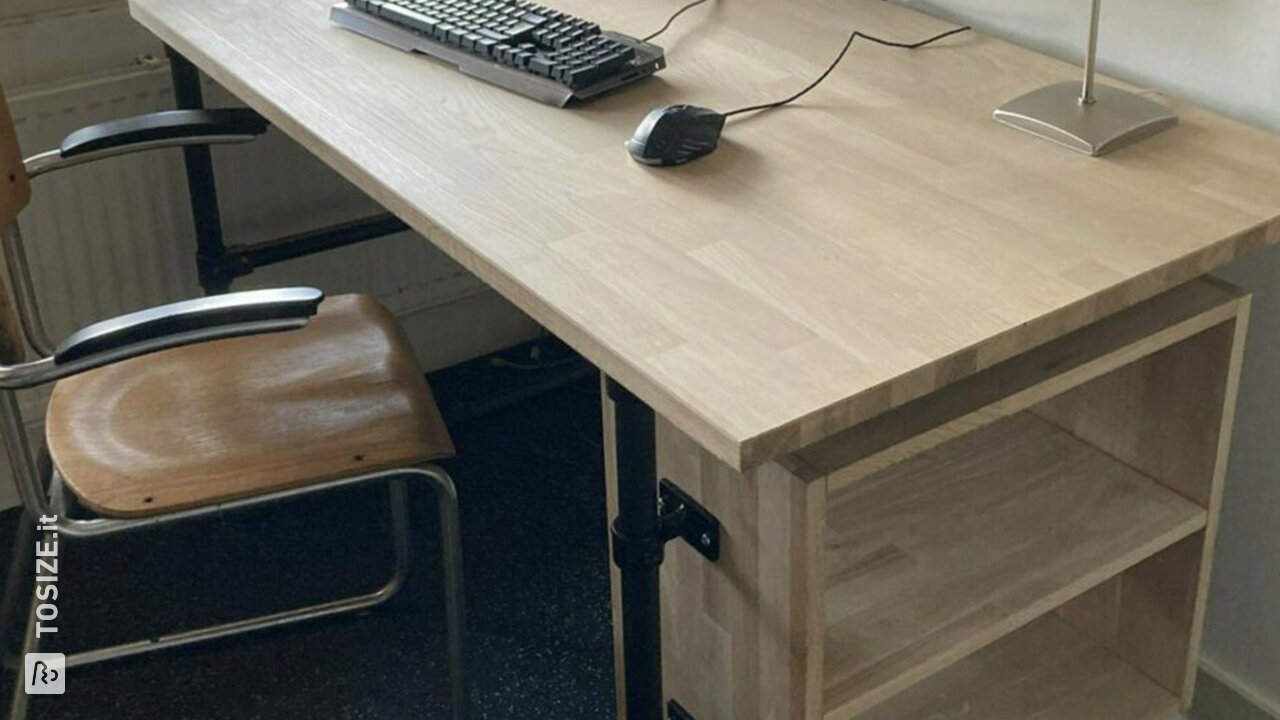
Round off the edges by 4 mm
A 4 mm edge trim gives a tight result. Useful, for example, on:
- Desk tops - generally 18 - 40 mm thick
- Shelves - usually 18 - 22 mm thick
- Top panels for TV units - normally 18 - 40 mm thick
Order your plate material via the button below, directly to size with a tight finish. Or check out the other possibilities and examples below.
In this example, a 4 mm radius is applied to an 18 mm thick MDF blank.
Order your sheet material to size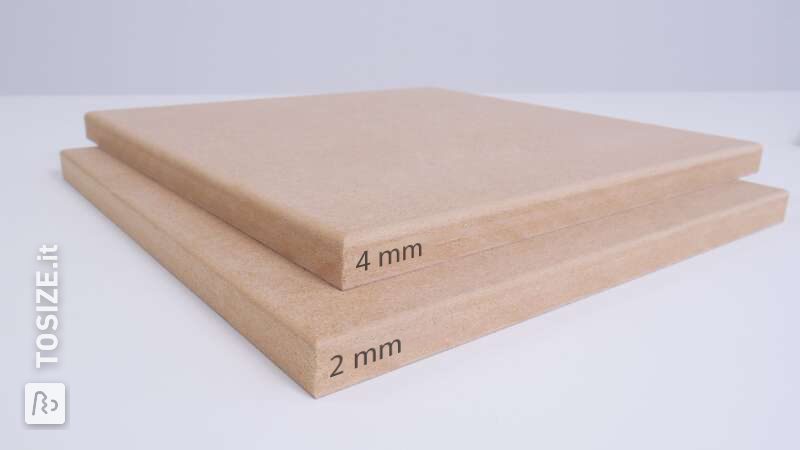
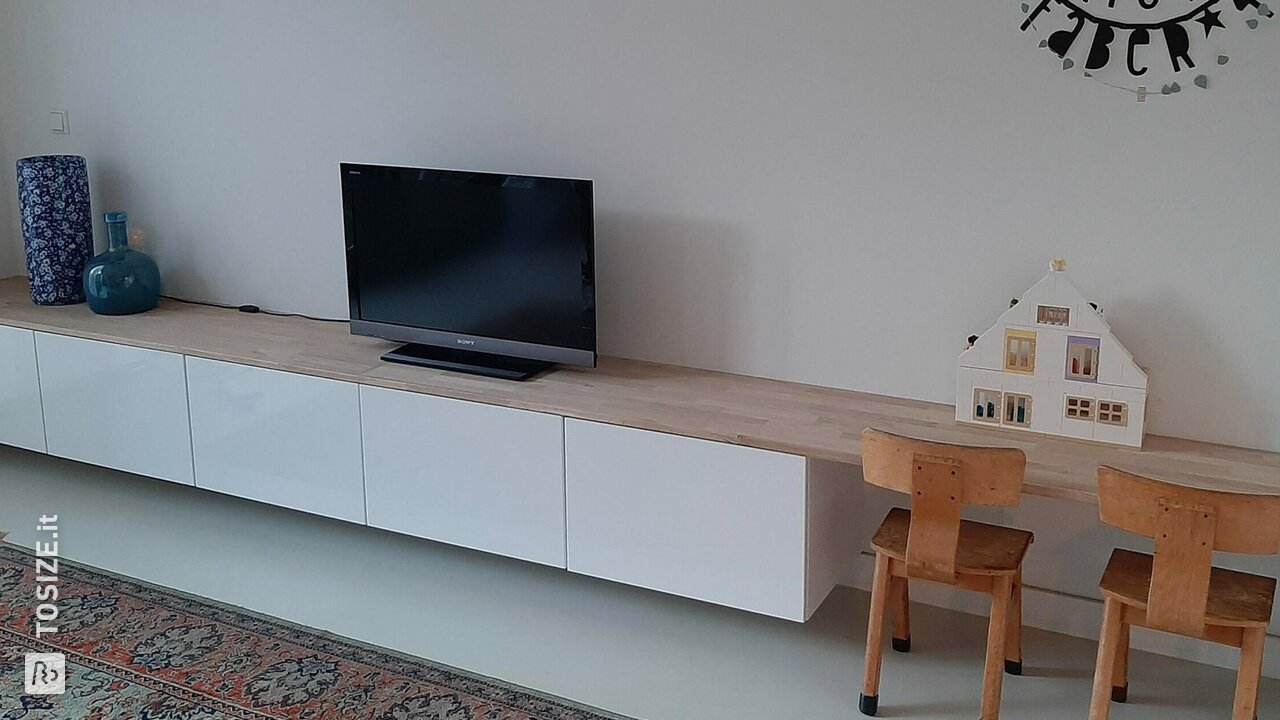
Round off edges 6 mm
An edge trim of 6 mm gives a rounder result. For 18 mm thick board material, about 1/3 of the edge is rounded off. Useful, for example, to apply to:
- Desk or table tops
- Shelves
- Top panels for TV units
Order your plate material via the button below, directly to size with a tight finish. Or check out the other possibilities and examples below.
In this example, a 6 mm radius is applied to an 18 mm thick MDF blank.
Order your sheet material to size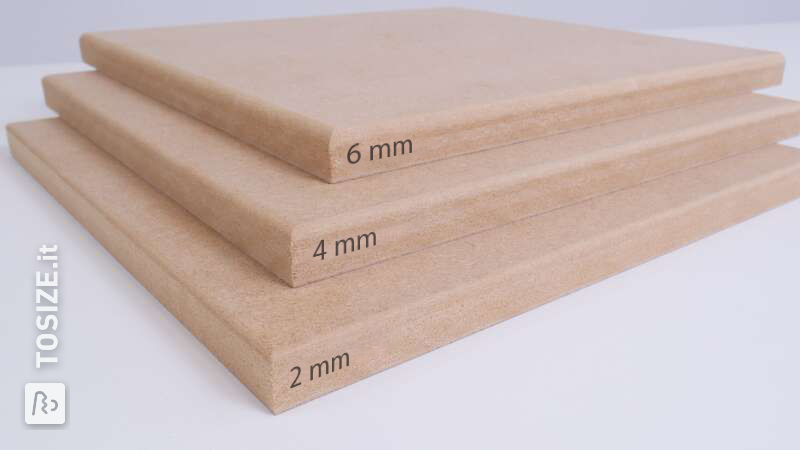
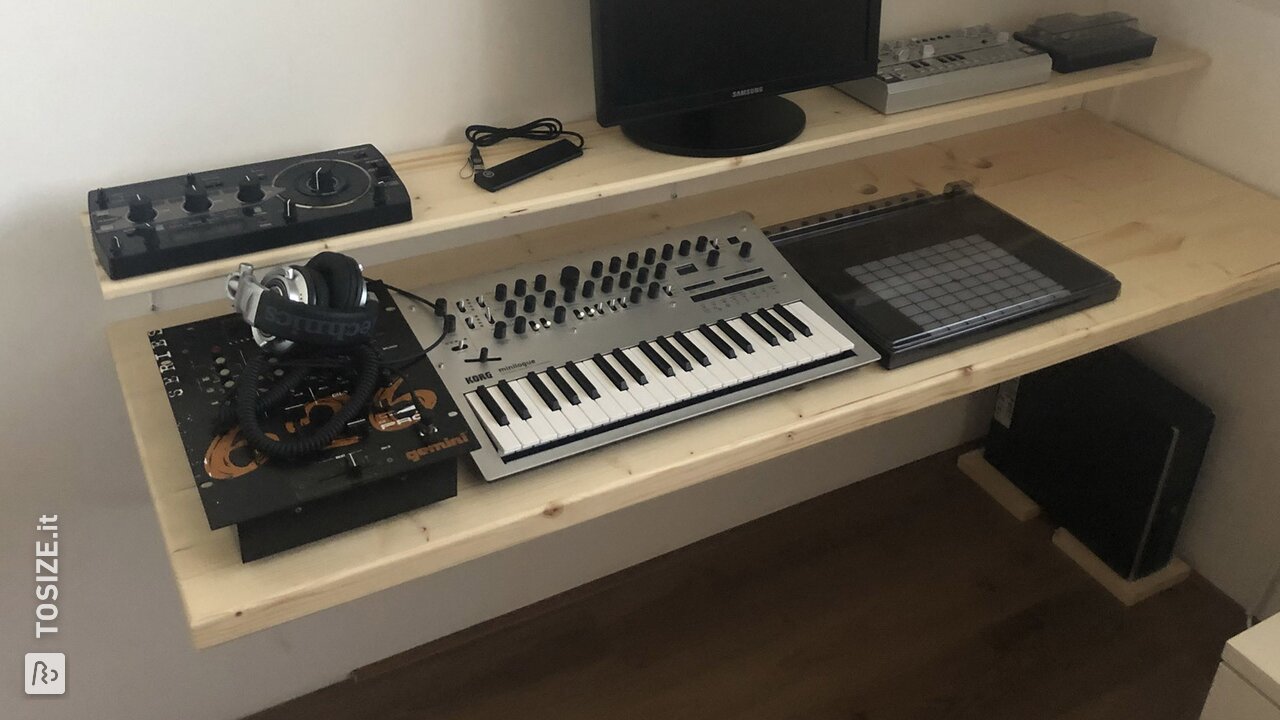
Other rounding
Unfortunately, at present it is not possible to choose a rounding other than those offered in our webshop. Would you like to know more about how to add a rounding to your sheet material?
Also check out these similar DIY tips
